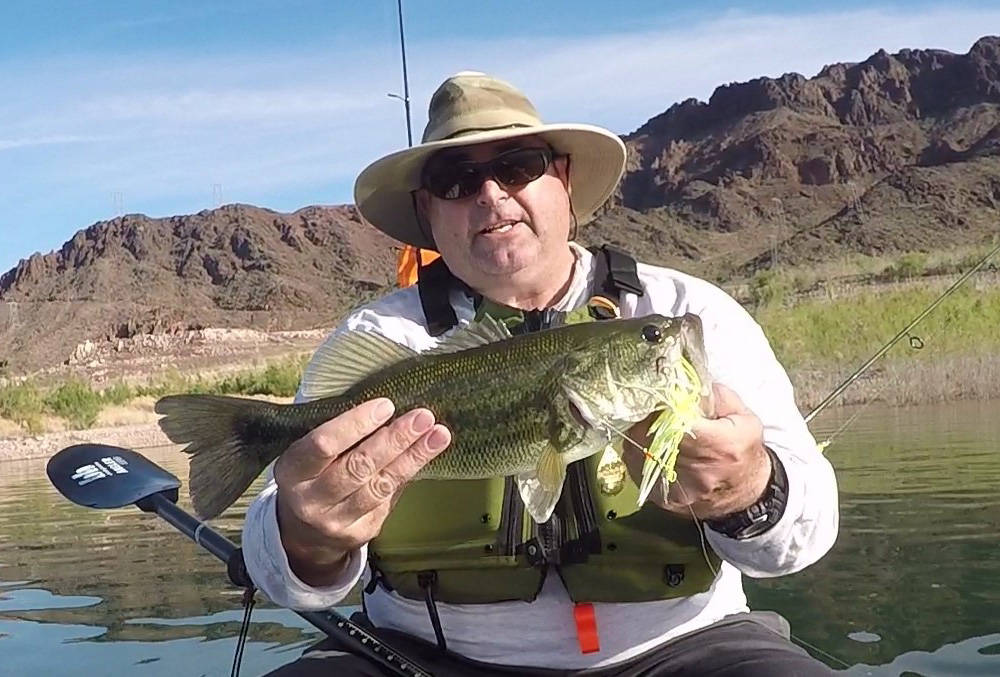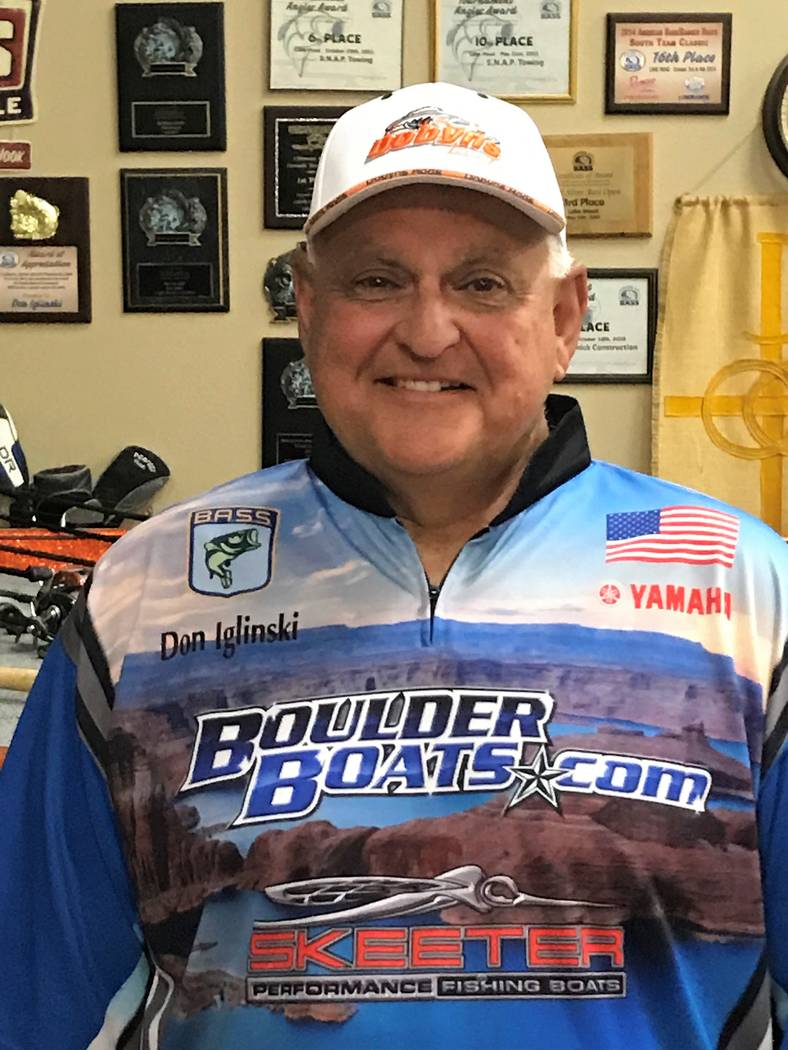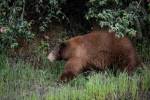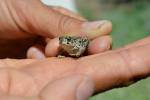Pro angler says now is good time to upgrade your rods, reels
Whether you enjoy fishing for trout, stripers, black bass or anything else that wriggles, there are few things as exciting as having a fish slam your top-water bait. And if you have been waiting for that opportunity, now is the time to rig your fishing rods and head for the water.
That’s the word from Las Vegas native and pro-angler Don Iglinski, 62, who now hails from Henderson. Iglinski grew up fishing Lake Mead and Lake Mohave, so he has seen them evolve as fisheries.
After competing in the 2018 WON (Western Outdoor News) Bass U.S. Open tournament held at Callville Bay Oct. 15-17, Iglinski shared a few thoughts on competitive angling along with some of what he knows about fishing Mead and Mohave as we move into late fall.
Iglinski fished his first tournament in 1986 when Western Outdoor News first started their circuit. “It went from a little sub-culture of guys who like to fish and everything, until now. I mean, that U.S. Open, 224 boats and trucks. Every rig there was like $120 (or) $130,000 between the boat and the truck,” said Iglinski.
While the amount of money competitive anglers spend on the sport of fishing has grown over the years, Iglinski said they also contribute to the fishing industry as whole. Especially when it comes to the development of new baits.
“The stuff that these guys use and experiment with eventually gets to the public. Big manufacturers start producing the baits and everything that works. It’s kind of like a testing system for the general public,” Iglinski said. “Depending on who your sponsors are, you’ll get bags of baits that aren’t even available on the market yet.”
The anglers then try different ways of rigging and using the baits. When they have given them a test drive, they submit a performance report to the manufacturer. “You give your opinion on the bait, ways that it can be improved or different colors that will work better, and different ways of rigging it,” he added. “And believe it or not, the fish really know the difference with good baits.”
One of the important things for anglers to recognize is the importance of flexibility when fishing for bass. Iglinski recommends having at least three different patterns ready to go. Something for shallow water, something for mid-depths and something for deep water. He also said you have to be prepared to make bait changes when the winds come up or even change direction.
As we move through October and into November, both weather and fishing conditions are changing at Mead and Mohave. Iglinski says it is the best time of year by far because it is nice in the morning and when the sun comes up it is comfortable.
“With the water temperature cooling off, the fish are concentrating on feeding right now. That’s what they are doing. They’re feeding because the spawn is coming up next for them. The rest of October, and virtually all of November should be a tremendous top-water bite, a really good reaction bite with schools of fish. You could go out in one cove, get one fish on and you’ll see 10, 20 fish behind it,” explained Iglinski.
The fish school up because it takes less energy when there are 20 bass chasing a school of shad than when there is one. Numbers enable them to trap the shad easier than when they are alone.
To take advantage of the feeding habits of bass, Iglinski recommends using spinnerbaits or square bill crankbaits around brush and grass beds.
“Especially the grass beds because there are some really nice deep grass beds out there right now,” he said. “Throw a Zara Spook, a Pop-R, any type of a walking bait or just a bait that sits on the surface and spits water. Throw it around grass beds, and I’m telling you, you’ll have a field day. You could get in one cove and catch a dozen fish in there.”
Iglinski prefers to fish Lake Mead when there is a clear day and light wind.
“Anywhere from a 5- to 10-mile an hour wind and you should have a field day out there on top-water baits,” he said. “Anything over 15 miles an hour and you want to start throwing stuff like a Whopper Plopper or a buzzbait.
“Something that really makes a lot of commotion on the surface because Pop-Rs and Zara Spooks will get lost in the wave action.”
Freelance writer Doug Nielsen is a conservation educator for the Nevada Department of Wildlife. His “In the Outdoors” column, published Thursday, is not affiliated with or endorsed by the NDOW. Any opinions he states in his column are his own. He can be reached at intheoutdoorslv@gmail.com.





























